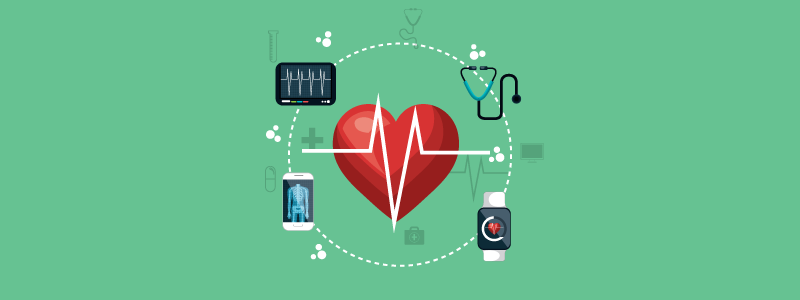In a matter of weeks, the U.S. Congress has come a long way on telehealth. For years, ACT | The App Association’s Connected Health Initiative (CH)) pushed for the removal of a critical barrier to widespread telehealth deployment: Section 1834(m) of the Social Security Act, which severely restricts the circumstances in which physicians and practitioners can be paid for offering telehealth services. Telehealth services are live voice or video visits between a patient and caregiver, in contrast to other communications methods that are not “live” (such as remote patient monitoring [RPM]). Passed and signed into law on March 27, the Coronavirus Aid, Relief, and Economic Security (CARES) Act (H.R. 748) temporarily lifted the Section 1834(m) restrictions. Soon we can expect to see widespread implementation of telehealth in the United States.
But for many, this may not be enough: Americans, particularly those living with chronic conditions, now more than ever must be able to monitor their health from home. According to the Centers for Disease Control and Prevention (CDC), six in ten American adults live with at least one chronic condition including heart disease, diabetes, cancer, and stroke. Moreover, these are the leading causes of death in the United States.
Compounding the prevalence of chronic conditions among Americans is early evidence suggesting that people with these conditions are at increased risk of succumbing to COVID-19. On March 31, the CDC released a report analyzing the prevalence of underlying health conditions among those confirmed to have COVID-19. You can read the full report here, but here are the bottom-line statistics:
- “Approximately one third of these patients [in the study] (2,692, 37.6%), had at least one underlying condition or risk factor. Diabetes mellitus (784, 10.9%), chronic lung disease (656, 9.2%), and cardiovascular disease (647, 9.0%) were the most frequently reported conditions among all cases.”
- “…[T]he percentage of non-ICU hospitalizations was higher among those with underlying health conditions (27.3%–29.8%) than among those without underlying health conditions (7.2%–7.8%); the percentage of cases that resulted in an ICU admission was also higher for those with underlying health conditions (13.3%–14.5%) than those without these conditions (2.2%–2.4%).”
- “Among all COVID-19 patients with complete information on underlying conditions or risk factors, 184 deaths occurred… 173 deaths (94%) were reported among patients with at least one underlying condition.”
Although these statistics are only preliminary, that last one bears repeating, 94 percent of those who passed away from COVID-19 also had at least one underlying condition (for a complete list of underlying conditions, check out page one of the report.)
New technologies have helped make chronic conditions manageable and preventable. For example, wearable devices and apps are helping those with diabetes to check their blood sugar and those with atrial fibrillation (Afib) to monitor for irregular heart rhythms. Additionally, for those wanting more immediate feedback from their doctor, patients can, in tandem with their provider, participate in RPM. (Several of CHI’s steering committee members do this for diabetes management.)
There’s also early evidence that wearables play a role in tracking early COVID-19 symptoms. Dr. John Brownstein, chief innovation officer at Boston Children’s Hospital (a CHI Steering Committee member) told ABC News, “It makes sense that these vital sign-tracking wearables could be valuable in early detection of the disease. Slight changes in heart rate and temperature can provide early clues into illness ahead of when—or even if—symptoms actually manifest.”
But what about Americans with undiagnosed chronic conditions or those at risk for developing them? There are various management programs out there for those who know they’re at risk, but—as we have seen with the spread of the global pandemic—it is best to be proactive. There are steps individuals can take to use connected devices, including a smart watch, to monitor their own health. Smart watches produced by Apple, Google, Garmin, and others vary in the health functions they provide. But the bottom line is that most collect physiologic data that is not only helpful to people looking to monitor their health, but also valuable in a clinical setting. In fact, for those already diagnosed with diabetes there are various Bluetooth-enabled blood glucose monitors that seamlessly connect with iPhone and Apple Watches. Similarly, starting with the Apple Watch Series 4, the ability to take an electrocardiogram became available vis-a-vis sensors in the watch. There are also more niche smart watch technologies available, such as the FDA-cleared Omron HeartGuide that takes blood pressure.
But making these technologies accessible to all Americans is quite another thing. For the last year, the Connected Health Initiative has been advocating for the Wearable Equipment Adoption and Reinforcement and Investment in Technology (WEAR IT) Act, which would clarify that consumers can use their Flex Savings Accounts (FSAs) or Health Savings Accounts (HSAs) to purchase devices and platforms that collect and analyze physiologic data. With provisions pertaining to HSAs having already passed in the CARES Act, we urge Congress to include a provision like WEAR IT in the next legislative package to give Americans access to the means to monitor their own health during the pandemic and the months and years to come. Especially for Americans with diagnosed chronic conditions, the ability to use their HSA/FSA purchase smart watch technologies and corresponding software platforms and apps now—without a prescription from a doctor—could be the difference between life and death. During this unprecedented time, it is more important than ever that Congress pass the WEAR IT Act.
